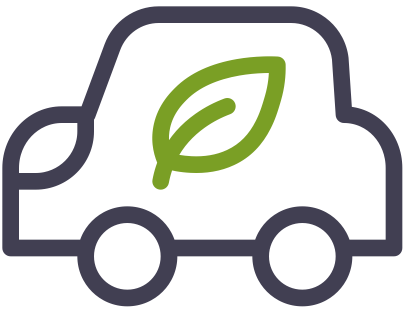Why hydrogen?
The basic prerequisite for the application of hydrogen in all affected sectors is the transition to a low-emission or emission-free economy. The European Union itself has set itself the goal of achieving complete climate neutrality by 2050, i.e. capturing and storing the same amount of greenhouse gas emissions as will be released into the atmosphere.
The very fact of the development of renewable energy sources in all member states then creates space for the stabilization of their unpredictable electricity production. In this case, hydrogen will play the role of an energy carrier, which is particularly suitable for seasonal accumulation and some mobility applications.
What is hydrogen?
Hydrogen is the lightest gaseous chemical element, which makes up two-thirds of all cosmic matter. It is estimated to make up more than 30% of the total mass of the Sun. It is the third most abundant element on Earth, yet it hardly ever occurs as a single molecule because it is highly reactive and immediately forms compounds.
Hydrogen is ubiquitous, whether in the form of water, natural gas, or methanol. Being the simplest and lightest element, it disperses into the air very quickly upon release. When hydrogen leaks, it does not pollute the environment in any way. It is an emission-free substance that is non-toxic and has no odor. Hydrogen is flammable but does not support combustion, burning with a colorless flame.
What is the use of hydrogen?
Hydrogen is a carrier (storage) of energy. It is widely used in transport, energy and industry. In the future, hydrogen is to serve as one of the energy carriers for the application of the so-called sector coupling, or the concept of sector integration. Read more

In energy, hydrogen can be used as energy storage. Due to the fact that hydrogen stores a large amount of energy (approx. 33 kWh/kg) and can easily be stored in large quantities, hydrogen is an ideal medium for seasonal energy accumulation (in the order of TWh). Read more

In transport, hydrogen is the main competitor of battery electric vehicles (BEVs). Hydrogen cars (FCEVs) have a longer range (600 km and more), a short filling time (approx. 5 minutes), they work better in cold conditions, when there are significantly smaller losses of range, and at the same time they have lower consumption at higher speeds. Read more

In industry, hydrogen can replace fossil fuels. In the steel industry, it can be used to reduce iron, for example. Today, hydrogen is primarily used for the production of ammonia, which is subsequently used mainly in the production and processing of fertilizers. Read more
How is hydrogen produced?
96% of all hydrogen produced today comes from fossil fuels. Only 4% is produced using water electrolysis. However, this ratio should change in the next decade in favor of emission-free production using the above-mentioned electrolysis of water.
Currently, it is reported that 96% of all world hydrogen production comes from fossil fuels, mainly in the so-called steam reforming of natural gas. It is the cheapest current hydrogen production technology. Steam reforming is a chemical process in which steam with a temperature of 750-950 °C is fed to methane. Read more
How is hydrogen produced in the Slovak Republic and what is the potential for the production of green hydrogen here?
Due to its specific position in the heart of Europe, the Slovak Republic has relatively little potential for the production of so-called green hydrogen.
The coefficient of utilization (approx. slightly above 20%) of wind power plants is lower in our country than in neighboring coastal states, where strong and stable winds blow on the coasts (approx. above 30%). Currently, there is no large electrolyser in the Slovak Republic that is intended for the production of green hydrogen on a commercial basis. Read more
What is water electrolysis?
Electrolysis is a process in which a direct current of electricity breaks the chemical bond between hydrogen and oxygen in an aqueous solution.
2 H2O → 2 H2 + O2
How much water is used in electrolysis?
For the production of 1 kg of hydrogen and 8 kg of oxygen, 8.92 liters of demineralized water are needed, i.e. water stripped of all present minerals (even purer than distilled water) Read more
What types of electrolyzers do we have?
Currently, three types of electrolyzers are most often discussed, which are advanced enough to saturate the market demand. These are electrolyzers using alkaline electrolysis, PEM electrolysis and high-temperature electrolysis taking place in fuel cells with solid oxides. Read more
What kind of water can be used in electrolysis?
The water required for the production of very pure hydrogen must be demineralized, i.e. free of all dissolved substances and impurities. However, it can be obtained from practically any water source. Read more
Hydrogen storage
How can hydrogen be stored?
Currently, the most promising and also the most commercially advanced technology for hydrogen storage is hydrogen compression in the gaseous state. The hydrogen stored in this way tends to escape due to the very small size of the molecule. Read more

Application of hydrogen in mobility
What are fuel cells?
Fuel cells in electric cars are basically small electricity generators that get their energy from a direct electrochemical reaction between oxygen and hydrogen. Hydrogen is stored in a tank from which it is fed into the fuel cell. There it reacts with oxygen and thus produces electricity. The product of this electrochemical reaction is only distilled water. Read more
How do fuel cells work in electric cars?
A fuel cell is similar in structure to batteries. In the fuel cell we find an anode, a cathode and a membrane with a catalyst. Hydrogen enters the system on the anode side and oxygen on the cathode side. Read more
How does a battery electric car differ from a fuel cell car?
A fuel cell vehicle (FCEV) is also an electric vehicle. The car includes a battery, an electric motor and a fuel cell together with a hydrogen tank. Read more
How is a hydrogen electric car refueled?
Refueling takes place at filling stations. The whole process is very similar to refueling traditional fossil fuels. After connecting the filling gun to the tank valve, you push the lever and the whole system takes care of the rest of the work. Filling the tanks takes 5 minutes and will give the car full capacity. Read more
How many filling stations do we have in Slovakia?
On February 18, 2022, representatives of Messer Tatragas opened to the public the first hydrogen filling station operated in the leased premises of Slovnaft. The capacity of the tank is 5 to 6 kg of hydrogen, 1 kg of hydrogen is sold for 21.6 euros, and a car can be refueled in approximately 2 to 3 minutes. This device currently pumps to a relatively low pressure of 200 bars, but in general, passenger vehicles can be filled up to 700 bars, where the range is around 600 to 700 km. Read more
How does a hydrogen electric car work in cold weather?
The advantage is the reliability of the entire system in cold weather. Compared to battery accumulators, fuel cells are not subject to degradation during cold weather. Read more
Can't the waste water in the hydrogen electric car system freeze?
Systémy palivových článkov a odvod vody je v súčasnosti navrhnutý tak, aby k zamrznutiu vody v celom systéme auta nemohlo dôjsť. Read more
Is battery electromobility a better solution for transport than fuel cells?
It depends on who you ask and what type of transport we are talking about. Hydrogen and batteries are two complementary technologies that complement each other. Why?
How heavy are hydrogen storage tanks in cars?
Hypothetically storing 4.2 kg of compressed hydrogen at a pressure of 700 bar requires a tank in cars that weighs around 135 kg. Read more
Couldn't hydrogen be liquefied and then refueled like standard gasoline?
This solution is extremely energy inefficient. Liquid hydrogen must be kept at a temperature of -253 °C, and if these conditions are not met, the hydrogen evaporates. Read more
Is hydrogen safe?
All fuels contain a high concentration of energy and can therefore be dangerous under certain conditions. However, hydrogen can be considered as safe or even safer than any other fuel. Read more
Hydrogen economy
How much does it cost to produce 1 kg of hydrogen?
The price mainly depends on the production method. For the production of green hydrogen, it is also necessary to take into account the different price in individual parts of the world, depending on how much it costs to produce electricity from renewable energy sources. The price of hydrogen production varies in the following numbers:
| Steam reforming of natural gas | 1,5 - 2,5 €/kg |
| Coal gasification | 1,8 - 2,5 €/kg |
| Electrolysis of water | 5 - 8 €/kg |
How much does 1 kg of hydrogen cost at filling stations?
For the end user, the price of hydrogen for 1 kg is currently set at 12.85 euros in Germany (where the most filling stations are located). Converting to kilometers and using an average consumption of 1 kg per 100 km, 1 km in a hydrogen electric car will cost you ~ 0.1285 EUR. Read more
How will the price come down in the next 10 years?
The hydrogen economy will not be sufficiently developed without the help of state subsidies. To reduce the price, it is necessary to invest in production. In the coming years, support for low-emission and zero-emission (green hydrogen) will prevail in Europe, the aim is to build 40 GW of electrolysers within the EU by 2030 and support the construction of another 40 GW of electrolysers outside the borders to increase imports. Read more



